Welcome to Hometown Canada |
||
|
Hometown
Canada Pages
Our Hometown Sites
General Information
|
Choose Your Hometown's Province:
A profile of the great country of Canada! Within these pages you will find information pertaining to many cities, towns and villages accross the great nation of Canada. You will find businesses, classified ads, Community Bulletin Boards, Calendars of Events, Schools, Churches, Non-Profit Organizations, Recreational ideas and activities, local government information, regional and local history, listings of residents, photos and much, much, more! So choose your province and enjoy!
|
|
CanadaCanada is the world's second-largest country by total area, occupying most of northern North America. Extending from the Atlantic Ocean to the Pacific Ocean and northward into the Arctic Ocean, Canada shares land borders with the United States to the south and to the northwest. Inhabited first by aboriginal peoples, Canada was founded as a union of British and former French colonies. Canada gained independence from the United Kingdom in an incremental process that began in 1867 and ended in 1982; it remains a Commonwealth Realm. Canada is a federal constitutional
monarchy with parliamentary democracy. Comprising ten provinces and
three territories, Canada is a bilingual and multicultural country,
with both English and French as official languages at the federal
level. A technologically advanced and industrialized nation, Canada
maintains a diversified economy that is heavily reliant on trade—particularly
with the United States, with which Canada has had a long and complex
relationship—and its abundant natural resources.
Overview Originally a union of former French and British colonies, and sometimes (mostly formerly) styled as the Dominion of Canada, Canada is a founding member of the United Nations, the Commonwealth of Nations, and La Francophonie. Canada defines itself as a bilingual and multicultural nation: English is the
majority language in most provinces of Canada. Canada is a technologically advanced and industrialized nation. It is a net exporter of energy because of its large fossil fuel deposits, nuclear energy generation, and hydroelectric power capacity. Its diversified economy relies heavily on an abundance of natural resources and trade, particularly with the U.S., with which it has had a long and complex relationship (see U.S.-Canada relations). Canada has ten provinces and three territories:
Canada's major cities that are not capital cities include Montreal, Quebec; Vancouver, British Columbia; and Calgary, Alberta.
|
||||||||||||||||||||||||||||||||||||||||||||||||||||||||||||||||||||||||||||||||||||||||||||||||||||||||||||
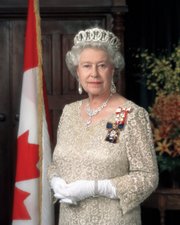 Queen Elizabeth II, Queen of Canada |
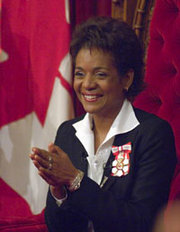 Michaëlle Jean, Governor General |
Canada's constitution governs the legal framework of the country and consists of written text and unwritten traditions and conventions. The federal government and the governments of nine provinces agreed to the patriation of the constitution, with procedures for amending it, at a meeting of First Ministers in November 1981. Quebec did not agree to the changes, and Quebec nationalists refer to that night as the Night of the Long Knives.
The position of Prime Minister, Canada's head of government, in practice belongs to the leader of the political party who can command a majority in the House of Commons. The Prime Minister is formally appointed by the governor general. The prime minister, in turn, appoints the Cabinet, drawn by convention from members of the prime minister's party in both legislative houses, though mostly from the Commons. Executive power is exercised by the prime minister and cabinet, all of whom are sworn into the Privy Council of Canada and become ministers of the Crown. The Prime Minster exercises a great deal of individual political power, especially in terms of the appointment of other officials within the government and civil service.
The legislative branch of government has two houses: the elected House of Commons and the appointed Senate. Each member in the Commons is elected by simple plurality in one electoral district or "riding"; general elections are called by the governor general when the prime minister so advises, and must occur every five years or less. Members of the Senate, whose seats are apportioned on a regional basis, are chosen by the prime minister and formally appointed by the governor general, and serve until age 75.
Canada has four main political parties today. The traditionally centrist / left-of-centre Liberal Party of Canada formed the government in Canada for most of the 20th century, and is the party of the current Prime Minister Paul Martin. The only other party to have formed a government is the now-defunct, right-of-centre Progressive Conservative (PC) Party and its predecessor, the Conservative Party, which was the dominant political party in the 19th century. The PC Party merged with the Canadian Alliance to form a new Conservative Party of Canada in December 2003. The New Democratic Party (NDP) is the major party furthest to the political left. The Bloc Québécois promotes Quebec independence from Canada and currently holds a majority of Quebec's seats in the Commons. There are many smaller parties and, while none have current representation in Parliament, the list of historical parties with elected representation is substantial.
Canada's judiciary plays an important role in interpreting laws and has the power to strike down laws that violate the constitution. The Supreme Court of Canada is the highest court and final arbiter; its nine members are directly appointed by Cabinet. All judges at the superior and appellate levels are selected and appointed by the federal government, after consultation with non-governmental legal bodies. The federal cabinet also appoints justices to superior courts at the provincial and territorial levels. Judicial posts at the lower provincial and territorial levels are filled by their respective governments.
Common law prevails everywhere except in Quebec, where civil law predominates. Criminal law is solely a federal responsibility and is uniform throughout Canada. Law enforcement, including criminal courts, is a provincial responsibility, but in most provinces policing is contracted to the Royal Canadian Mounted Police (RCMP). The RCMP is the only police force in the world to perform three different levels of enforcement: municipal, provincial, and federal.
Canada has a close relationship with the United States, sharing the world's longest undefended border, co-operating on some military campaigns and exercises, and being each other's largest trading partners. Canada also shares a history and long relationship with Great Britain as its "mother country".
In the last century, Canada has been an advocate for multilateralism, making efforts to reach out to the rest of the world and promoting itself as a "middle power" able to work with large and small nations alike. This was clearly demonstrated during the Suez Crisis whereby Lester B. Pearson mollified the tension by introducing the idea of peacekeeping and the inception of the United Nations Peacekeeping Force. In 1957, Pearson was the recipient of the Nobel Peace Prize. In that spirit, Canada developed and has tried to maintain a leading role in UN peacekeeping efforts. Canada has cumulatively contributed more troops to peacekeeping operations worldwide than all other nations combined and currently serves in over 40 different peacekeeping missions, most recently in Afghanistan.
Canada is a member of the United Nations, Commonwealth of Nations, La Francophonie, the Organization of American States (OAS), North Atlantic Treaty Organization (NATO), the Organization for Economic Co-operation and Development (OECD), the North American Free Trade Agreement (NAFTA), the World Trade Organization, the G8, and Asia-Pacific Economic Cooperation (APEC).
Canada currently employs about 62,000 regular and 26,000 reserve military personnel. The unified Canadian Forces are comprised of: the Canadian Forces Land Force Command (army), the Canadian Forces Maritime Command (navy), and the Canadian Forces Air Command (air force). Equipment deployed by the forces includes 2,400 armoured fighting vehicles, 34 combat vessels, and 140 combat aircraft.
Defence spending in Fiscal Year 2004-5 was approximately $14 billion. However, in the 2005 federal budget, the Liberal government allocated an additional $12.8 billion over five years to the armed forces, and committed to increasing troop levels by an additional 8,000 regular and reserve personnel over the same period.
Canadian forces have served in various wars including World War I, World War II, the Korean War and recently, in Afghanistan. Since Lester B. Pearson proposed the first UN peacekeeping force in 1956, the Canadian Forces have served in 42 peacekeeping missions—more than any other country.
Canada is composed of ten provinces and three territories. The provinces have a large degree of autonomy from the federal government, the territories somewhat less. Each has its own provincial or territorial symbols.
The provinces are responsible for most of Canada's social programs (such as health care, education, and welfare) and together collect more revenue than the federal government, an almost unique structure among federations in the world. The federal government can initiate national policies that the provinces can opt out of, but this rarely happens in practice. Equalization payments are made by the federal government to ensure that reasonably uniform standards of services and taxation are kept between the richer and poorer provinces.
All provinces have unicameral, elected legislatures headed by a premier selected in the same way as the Prime Minister of Canada. Each province also has a figurehead lieutenant governor representing the Queen, analogous to the Governor General of Canada, appointed on the recommendation of the Prime Minister of Canada, though with increasing levels of consultation with provincial governments in recent years.
Most provinces have provincial counterparts to the three national federal parties. However, some provincial parties are not formally linked to the federal parties that share the same name. Some provinces have regional political parties, such as the Saskatchewan Party. The provincial political climate of Quebec is quite different: the main split is between separatism, represented by the Parti Québécois, and federalism, represented by the Parti Libéral du Québec.
The three territories have fewer political powers than provinces, having been created by acts of the national Parliament rather than having their status enshrined in the Constitution. There is no lieutenant governor to represent and fulfil the functions of the Queen, but each has a politically neutral commissioner appointed by the federal government to act as its senior representative. Only the Yukon legislature follows the same political system as the provincial legislatures. The other two territories use a consensus government system in which each member runs as an independent and the premier is elected by and from the members.
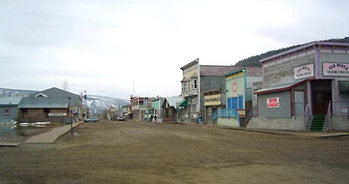
Dawson
City, Yukon, scene of the Klondike Gold Rush.
As an affluent, high-tech industrial society, Canada today closely resembles the U.S. in its market-oriented economic system, pattern of production, and high living standards. In the last century, the impressive growth of the manufacturing, mining, and service sectors has transformed the nation from a largely rural economy into one primarily industrial and urban. Canada has vast deposits of natural gas on the east coast and in the west, and a plethora of other natural resources contributing to self-sufficiency in energy. The 1989 Canada-U.S. Free Trade Agreement (FTA) and 1994 North American Free Trade Agreement (NAFTA) (which included Mexico) touched off a dramatic increase in trade and economic integration with the U.S. Since 2001, Canada has successfully avoided economic recession and has maintained the best overall economic performance in the G8.
Two long-term concerns loom. One is the continuing political differences over the Constitution between Quebec and the rest of Canada, periodically raising the possibility of Quebec independence. As the economy becomes stronger, notably in Quebec, fears of separation have generally waned. Another concern is the "Brain Drain", the emigration of professionals to the U.S. in search of higher pay, lower taxes, and high-tech opportunities. However, a largely under-recognised "Brain Gain" is occurring simultaneously, as educated immigrants (particularly from developing countries) continue to enter Canada.
Canada's two official languages are English and French. On July 7, 1969, under the Official Languages Act, French was made commensurate to English throughout the federal government. This started a process that led to Canada redefining itself as a bilingual and multicultural nation:
While the nation remains officially bilingual, the majority of Canadians are fluent only in English.
The official language of Quebec is French, as defined by the province's Charter of the French Language, which was introduced by the Parti Quebecois in 1976. However, the charter also provides certain rights for speakers of English and aboriginal languages. Quebec provides most government services in both French and English.
French is mostly spoken in Quebec with pockets in New Brunswick, eastern and northern Ontario, Saskatchewan, and southern Manitoba. In the 2001 census, 6,864,615 people listed French as a first language, of whom 85% lived in Quebec. 17,694,835 people listed English as a first language.
New Brunswick is the only officially bilingual province, a status specifically guaranteed by the Canadian Charter of Rights and Freedoms. Some provincial governments, notably Manitoba and Ontario, offer many services to their French minority populations.
Non-official languages are also important in Canada, with 5,470,820 people listing a non-official language as a first language. (The above three statistics include those who listed more than one first language.) Among the most important non-official first language groups are Chinese (853,745 first-language speakers), Italian (469,485), German (438,080), and Punjabi (271,220).
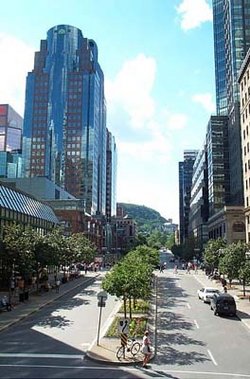
A view from downtown Montreal,
Quebec
The Constitution Act of 1982 recognizes three groups of aboriginal peoples in Canada: the Indians (now often called First Nations), Inuit, and Métis. The aboriginal population is growing almost twice as fast as the rest of the population in Canada. Aboriginal peoples number 790,000 people (or 3% of Canada's population) of whom about 69% are First Nations, 26% are Métis, and 5% are Inuit.
Today, there are more than 50 different languages spoken by Aboriginal peoples, most of which are spoken only in Canada and are in decline. The only aboriginal languages believed to be currently fully sustainable are Ojibwe and Cree, together totalling up to 150,000 speakers, and Inuktitut, with about 29,000 speakers in the Northwest Territories, Nunavut, Nunavik (Northern Quebec), and Nunatsiavut (Northern Labrador).
Two of Canada's territories give official status to aboriginal languages. In Nunavut, Inuktitut and Inuinnaqtun are official languages alongside English and French, and Inuktitut is a common vehicular language in government. In the Northwest Territories, the Official Languages Act specifies no fewer than eleven official languages: Chipewyan, Cree, English, French, Gwich'in, Inuinnaqtun, Inuktitut, Inuvialuktun, North Slavey, South Slavey and Tåîchô. However, besides English and French, these languages are not vehicular in government; official status entitles citizens to receive services in them on request and to deal with the government in them.
The 2001 census recorded 30,007,094 people, and as of April 2005 the population has been estimated by Statistics Canada as 32.2 million people[9]. About three-quarters of Canada's population live within 150 km of the U.S. border, and a similar proportion live in urban areas.
In the 2001 census, 39.42% of respondents reported their ethnic origins as "Canadian", most of whom are believed to be of British, Irish, and French heritage of earlier immigrants. In addition, 20.17% identified their origin as English, 15.75% as French, 14.03% as Scottish, and 12.90% as Irish. Numerous other groups were also reported, but only German (9.25%) and Italian (4.29%) were significantly reported.
While Canada's 2005 population is 32.3 million, at the time of the 2001 census, the Canadian population was 28.3 million, meaning growth of 4 million people, by both immigration and natural increase.
(based on single responses)
The 2001 census reported that Canada had 5,448,480 immigrants.
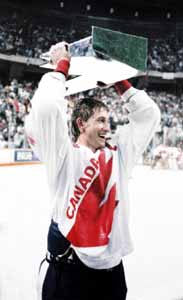
Pierre Trudeau's federal government adopted multiculturalism as an official policy in 1971 in the aftermath of the Royal Commission on Bilingualism and Biculturalism conducted under the government of Prime Minister Lester B. Pearson.
Due to its colonial past, Canadian culture has historically been heavily influenced by British and French cultures and traditions. In more modern times, Canadian culture is now greatly influenced by American culture, due to the proximity and the migration of people, ideas, and capital. Amidst this, Canadian culture has developed unique characteristics. In many respects, a more robust and distinct Canadian culture has developed in recent years, partially because of the civic nationalism that pervaded Canada in the years prior to and following the Canadian Centennial in 1967, and also due to a focus by the federal government on programs to support culture and the arts.
There were and are many distinct First Nations across Canada, each with its own culture, language and history. Their culture was transmitted largely through oral means and stories were passed down through the elders to the younger generations. Various tribes created unique styles of artifacts such as weaved baskets, painted pictures, and carved sculptures of animals. Much of this artistic legacy remains celebrated in Canada to this day. The emblem of the Vancouver 2010 Winter Olympics is the inukshuk, a stack of rocks in human form that is a part of Inuit culture.
From as early the 1500s, European explorers, traders, and fishermen from England, Ireland and France helped form the basis of Canadian culture. During their colonization of Canada, settlers created a folklore about the land around them. The tales of Paul Bunyan are a product of French-Canadian folklore and the style of jigs from Newfoundland found their origins in Ireland.
Canada and the United Kingdom share a common history and continue to work together through many organizations such as the Commonwealth, G-8, and NATO. The two countries share the same head of state, and have among the oldest parliamentary democracies in the world. They still share many of the same customs, values, and traditions, which have been reinforced by working side by side in two world wars and over half a century of expanding peace and prosperity. The United Kingdom is Canada’s third largest trading partner and is the second largest source of tourists visiting Canada.
Many American movies, authors, TV shows, and musicians are equally popular in Canada (and vice versa). Many Canadian musicians have been successful in the U.S. and around the world. Most cultural products of these types are now increasingly marketed toward a unified "North American" market, and not specifically a Canadian or American one.
The U.S. and Canadian governments share a variety of close working partnerships in trade, economic, legal, security, and military matters.
As Canada and the U.S. have grown closer, many Canadians have developed complex feelings and concerns regarding what makes Canada a "distinct" nation within North America. Pierre Elliot Trudeau once told an American audience: "Living next to you is in some ways like sleeping with an elephant. No matter how friendly and even-tempered is the beast, if I can call it that, one is affected by every twitch and grunt." The large American cultural presence in Canada has prompted some fears of a "cultural takeover," and has led to the establishment of laws and government institutions to protect Canadian culture. Cultural institutions include the CBC, the National Film Board of Canada, and the CRTC. Much of Canadian culture remains defined in contrast to American culture.
In recent years, Canada has increasingly distinguished itself from the U.S. as more socially liberal while still being fiscally conservative. The current Canadian government supports universal health care, same-sex marriage and decriminalization of marijuana, although these issues remain topics of political debate. In other matters, Canadian and American politics place similar priorities on balanced budgets, tax cuts, and free trade.
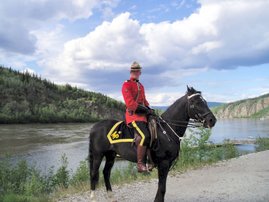 The
use of the maple leaf as a Canadian symbol dates back to the early
18th century, and is depicted on its current and previous flags, the
penny, and on the coat of arms. White (for England) and Red (for France)
were proclaimed national colours in 1921. Red and white are also the
colours of England's Cross of St. George. Canada is known for its
vast forests and mountain ranges (including the Rocky Mountains) and
the animals that reside within them, such as moose, caribou, beavers,
polar bears, grizzly bears, and the common loon. The beaver's emblematic
status originated from the fact that early Canadian settlers traded
fur. Other symbols include the ship Bluenose, which is featured on
the Canadian dime, and the Canada goose. Canada is also well known
for its Royal Canadian Mounted Police, and products made from the
country's natural resources, such as maple syrup. Anything pertaining
to hockey, Canada's official winter sport, is also often used as a
national symbol of unity and pride; lacrosse is the official summer
sport. The Canadian Football League with three downs and a 110-yard
field has also been seen as part of a heritage worth preserving.
The
use of the maple leaf as a Canadian symbol dates back to the early
18th century, and is depicted on its current and previous flags, the
penny, and on the coat of arms. White (for England) and Red (for France)
were proclaimed national colours in 1921. Red and white are also the
colours of England's Cross of St. George. Canada is known for its
vast forests and mountain ranges (including the Rocky Mountains) and
the animals that reside within them, such as moose, caribou, beavers,
polar bears, grizzly bears, and the common loon. The beaver's emblematic
status originated from the fact that early Canadian settlers traded
fur. Other symbols include the ship Bluenose, which is featured on
the Canadian dime, and the Canada goose. Canada is also well known
for its Royal Canadian Mounted Police, and products made from the
country's natural resources, such as maple syrup. Anything pertaining
to hockey, Canada's official winter sport, is also often used as a
national symbol of unity and pride; lacrosse is the official summer
sport. The Canadian Football League with three downs and a 110-yard
field has also been seen as part of a heritage worth preserving.
In recent years, other symbols such as beer have become a source of pride as well. One example was the former Montreal-based Molson Canadian, which often infused beer with Canadian nationalism in its commercials (see I am Canadian). The Canadian fashion retailer Roots also sells a variety of merchandise designed to evoke nationalistic sentiment.
Statutory and major holidays in Canada include New Year's Day, Good Friday, Easter, Easter Monday, Victoria Day, Canada Day, Labour Day, Thanksgiving, Remembrance Day, Christmas, and Boxing Day.
Although not official
holidays, Valentine's Day, Mother's Day, Father's Day, and Hallowe'en
are traditionally celebrated by Canadians.
Hometown CanadaCities Canada, Towns Canada,
Villages Canada...
|